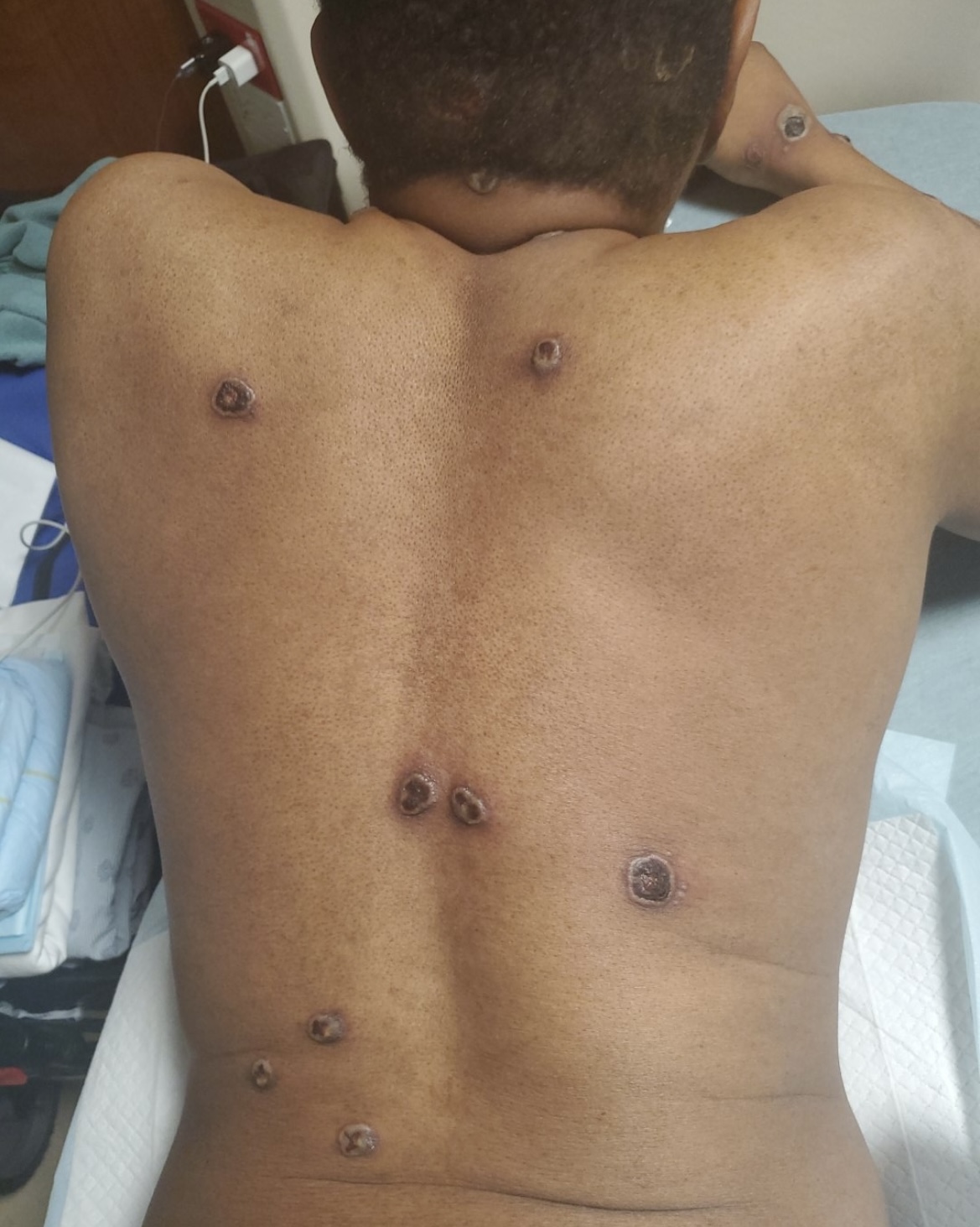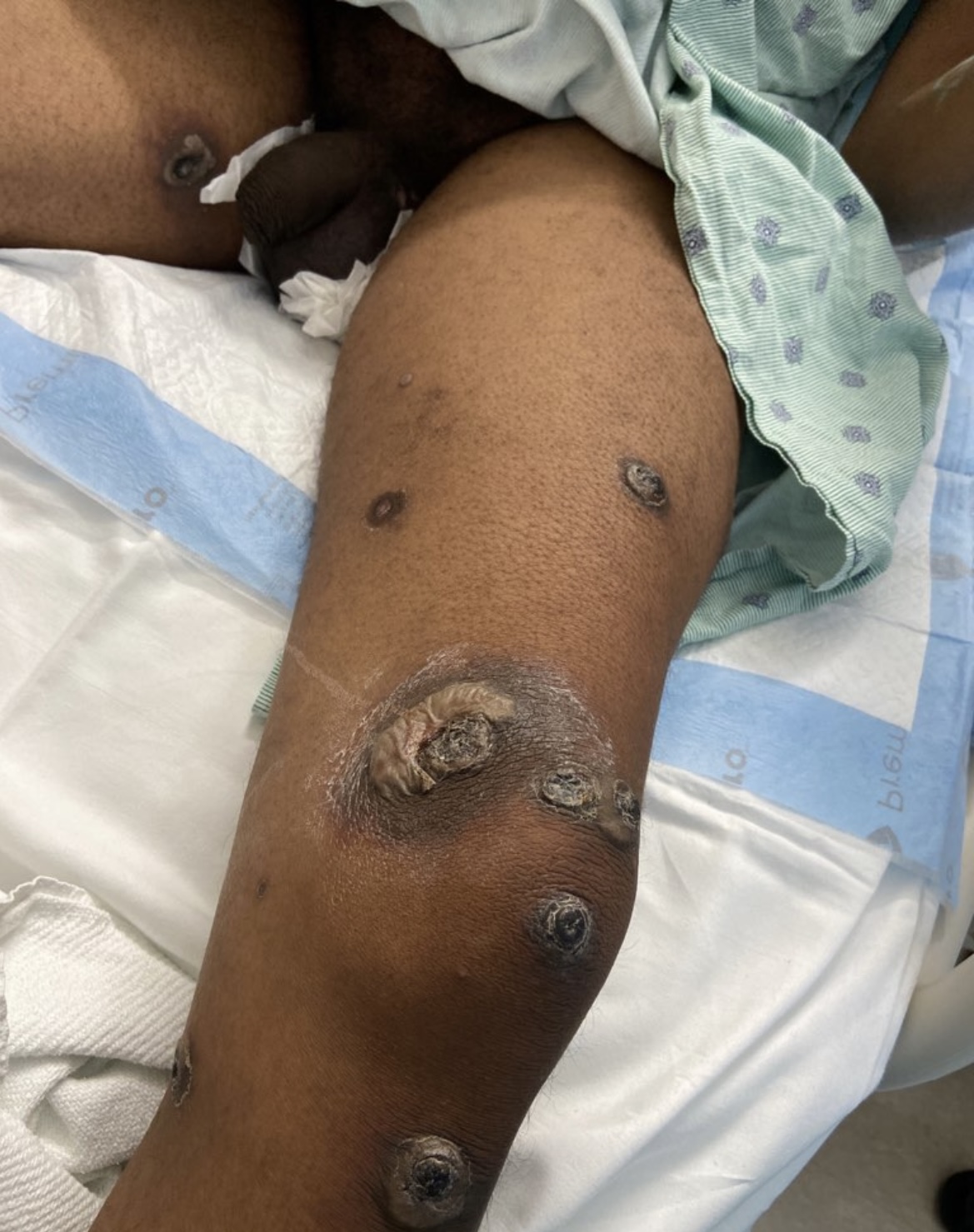Case Presentation: A 43-year-old male with human immunodeficiency virus (HIV), off antiretroviral therapy (ART) for 5 years presented to an outside hospital in July 2022 with diffuse umbilicated skin lesions. Skin scrapings for the monkeypox virus PCR were positive. No medications were prescribed. Days later, the patient was admitted to a different hospital with worsening pain and worsening lesions. He completed a 14-day course of Tecovirimat and Trimethoprim/ Sulfamethoxazole for treatment of monkeypox and a superimposed cellulitis. At an infectious disease follow up a month later, his CD4 count was 55 and viral load was 76,600 copies/ mL. Skin lesions were in different stages of healing but improving. He was started on bictegravir/ emtricitabine/ tenofovir alafenamide (Biktarvy). Two weeks after starting Biktarvy, the patient presented to our community hospital with fatigue, headache, new and worsening lesions, and diffuse body pain. Physical exam was notable for umbilicated lesions along with pustules and scabs involving the face, chest, dorsal hands, abdomen, perineum, genitals, anterior knees, shins, and soles of feet. Exam was otherwise normal. A comprehensive metabolic panel, complete blood count, and blood cultures were unremarkable. Infectious disease and Dermatology were consulted. Monkeypox serum PCR was positive. Wound culture grew Klebsiella pneumoniae, extended spectrum beta-lactamase producing Escherichia coli, and Corynebacterium striatum. Skin biopsy showed severe necrosis in the entire dermis with no acid-fast bacilli. Viral and fungal stains were negative. The patient was started on Tecovirimat and Meropenem. Lesions stabilized after 2 weeks of treatment and the patient was discharged home with close follow up.
Discussion: Human monkeypox infection is an orthopoxviral disease that has moved from endemic nations to non-endemic nations including the United States in recent months. Along with headache, lymphadenopathy, body aches, weakness, and a fever, patients can have a skin rash that starts as macules, progresses to pustules, vesicles, or ulcers and ultimately crusts over to form scabs. Patients with monkeypox are infectious until all lesions have resolved. Patients with HIV infection are disproportionately affected and have poorer outcomes. Therefore, initiation of ART is integral to this patient population to reduce risk of infection and severity. Immune reconstitution inflammatory syndrome (IRIS) is a syndrome of hyperinflammatory responses that usually occurs when starting HAART due to a restitution of CD4+ T lymphocytes and the normalization of an immune response against pathogens. IRIS develops in 25 to 30% of patients started on ART. While most IRIS cases can be mild and limited, severe cases with CNS or pulmonary involvement can potentially lead to significant morbidity or death. Treating the underlying infection and continuing ART are critical in mild cases of IRIS.
Conclusions: To our knowledge, there is no current data on incidence of IRIS in patients with monkeypox. Our patient is a reminder that a monkeypox infection remains active until all skin lesions have resolved, regardless of therapy completion. While initiation of ART is imperative in patients with HIV, delaying ART until patients have fully recovered from infections may be advisable.


